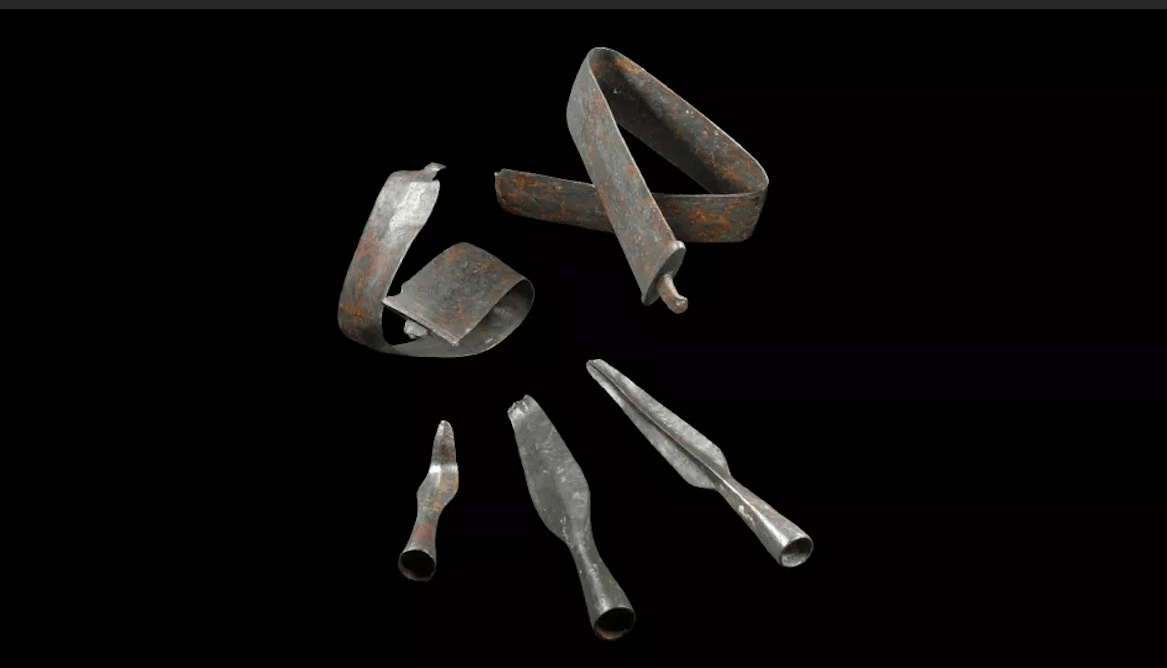Nádhera.. 👏
He discovered the treasure on the mountain where the fortified settlement stretched
Categories: Treasures , Finds and rescue research abroad , Nálezy nejenom s detektorem v západní Evropě
Spears, swords, coins and fragments of shields. All this contains one of the greatest treasures of the Iron Age found in Germany. The depot has a total of over 150 artifacts. A substantial part was discovered by Matthias Dickhaus, who repeatedly returned to Mount Wilzenberg with a metal detector.
Archaeologists from the Westphalia-Lippe Regional Association (LWL) have reported the discovery of this rare treasure. Matthias Dickhaus searched the site of the fort in the past. He discovered over a hundred items, including so-called bent weapons. Some have been found before.
It was mostly an arsenal owned by defeated warriors. The victorious party then preferred to destroy the weapons so that no one would misuse them. Dickhaus, with a metal detector, discovered spears, swords, and fragments of shields. Then there are belt hooks, horse equipment, three silver coins, bronze jewelry or a calf bone. "This is the greatest Iron Age treasure in the German state of North Rhine-Westphalia," said archaeologist Michael Baales.
Archaeologists also searched the same site eight years ago. They knew that there was a fortified settlement there in the Iron Age. While workers were working on the new pavilion there in the 1950s, they discovered two swords and a spear, which someone had also intentionally damaged. Researcher Dickhaus walked through this place with a metal detector from 2018 to 2020. He was in contact with LWL and the city.
In addition to the already mentioned artifacts, he also found a special horse bridle. "According to the processing of the handle, we think that the found bridle was used for horses that pulled the car. It allowed the animal to be controlled very precisely, which was important for a warrior on a chariot during battle, "the LWL said in a statement.
The fort was spread on the 658-meter-high Wilzenberg Mountain. People settled there around the year 300 BC. The walls of the ancient fort called Wallburg are still visible there today. The mountain is a popular tourist destination.
Most of the artifacts found date from the period from 300 BC to the first century BC. "Although the Wilzenberg fort was far from the centers of Celtic culture in other parts of Europe, the objects found are comparable to this culture," said archaeologist Manuel Zeiler.
Celtic and other Iron Age cultures are known to bend the weapons of a defeated enemy in a manner similar to the arsenal that is part of the Wilzenberg treasure. "Archaeological excavations at the shrines of Gournay and Ribemont-sur-Ancre, France, for example, clearly show how the victors destroyed the weapons of the defeated warriors. It could have been a ceremony that sealed the triumph over the enemy, "Zeiler recalled.



Sources: www.livescience.com
The article is included in categories:
- Archive of articles > Treasures
- Archive of articles > Archaeology > Finds and rescue research abroad
- Archive of articles > Archaeology > Finds and rescue research abroad > Nálezy nejenom s detektorem v západní Evropě
Post
Díky. 

Viky ,jako vždy perfektní článek je to radost číst.
Už se těším, až se tady objeví něco podobného od nás  , ale dobrá publikace nálezu si prostě žádá čas, tak snad to bude brzy...
, ale dobrá publikace nálezu si prostě žádá čas, tak snad to bude brzy...
Fajn počtení, díky Viky  To se mu to hledalo, na hradišti...
To se mu to hledalo, na hradišti...












